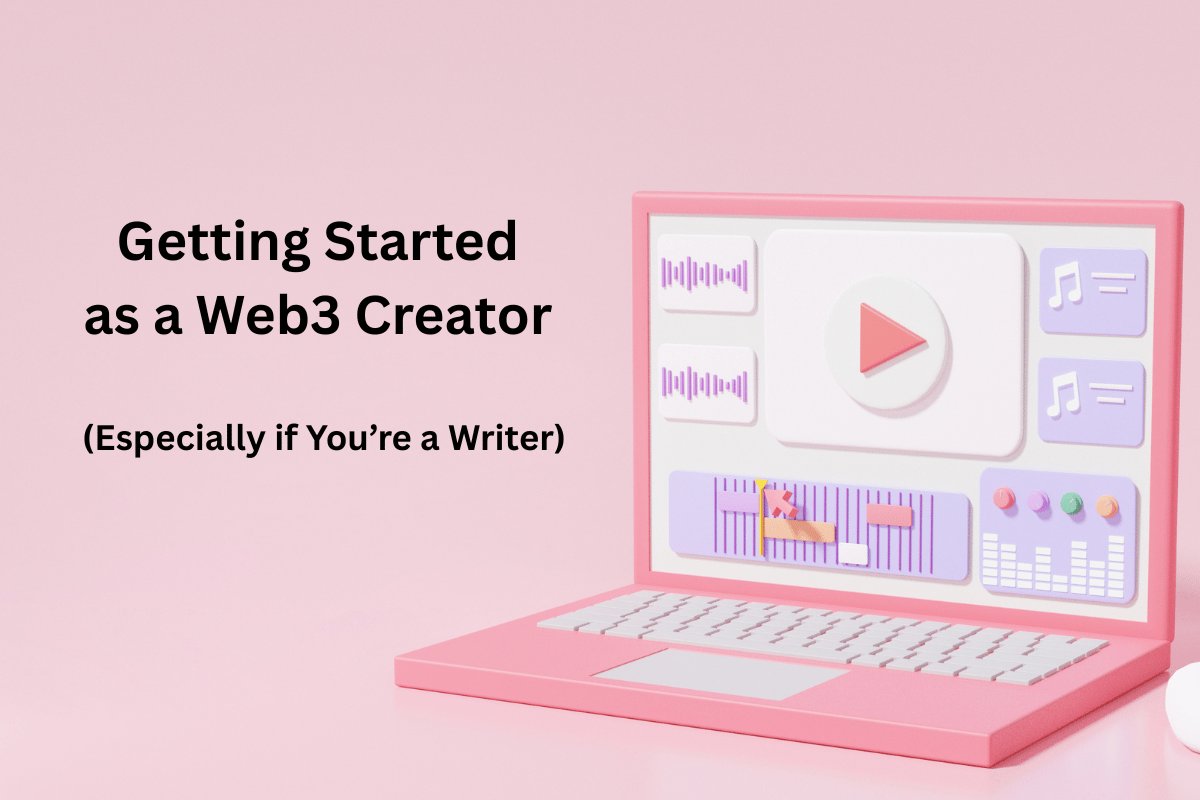- Hashed Out
- Posts
- Getting Started as a Web3 Creator (Especially if You’re a Writer)
Getting Started as a Web3 Creator (Especially if You’re a Writer)
A gentle, jargon-free guide to Web3 tools for writers, poets, and creators ready to experiment with ownership.

Web3 can sound intimidating — all wallets and gas fees and acronyms. But for writers, poets, and other creative professionals used to navigating grant forms and submission portals, it’s not as complex as it seems.
You don’t need to go full crypto-native to get started. You just need to dip your toe in and treat Web3 like a creative sandbox, not a replacement for everything you already do.
Here’s a gentle, no-hype guide to getting started.
Pick a short, original work that you love — an essay, a poem, an excerpt, or even an outtake from a current project. You’re not trying to go viral. You’re experimenting with new ways to connect and be valued.
This is your Web3 test piece. Keep it simple and authentic.
Step 2: Set Up a Wallet (Your Digital Passport)
To publish or sell on most Web3 platforms, you’ll need a crypto wallet — the equivalent of your login + payment method + creative identity.
We recommend:
Rainbow Wallet (iOS/Android) – beginner-friendly, elegant interface
MetaMask – the most widely used wallet, browser-based and mobile
Follow the steps to:
Write down your seed phrase (this is crucial — treat it like a passport + house keys)
Fund your wallet with a small amount of ETH (Ethereum) — around $20–50 is enough to experiment
→ You can buy ETH via card/ACH right in the wallet.
Step 3: Publish on Mirror.xyz
Mirror is the best place for writers to start. It works like a beautiful blog with Web3 features built in.
Connect your wallet
Create a “Writing NFT” or a regular post
Set a limited number of editions (ex: 25 copies)
Choose a price (ex: 0.01 ETH ≈ $30)
Hit publish!
You can even offer the piece for free but allow optional minting — a great way to test the waters without paywalling.
Optional: Use platforms like Paragraph.xyz to build an email list with token-based perks (early access, special updates, etc.)
Step 4: Tell People (and Invite Them In)
Share your minted piece on your existing channels — email list, Instagram, Twitter, blog. Let people know this is an experiment in creative ownership and community. You’re not asking for tips — you’re inviting people to collect, connect, and support your work in a new way.
You might say:
“I just published my first Web3 essay! It’s free to read, but you can collect a copy if you want to support my work directly. Think of it like owning a signed edition.”
Optional: Try a Hybrid Drop
Platforms like:
Zora — for visual/literary blends
Manifold — for customizable drops and metadata
Bonfire — for creating token-gated content hubs
These let you mix digital writing with physical perks: a signed chapbook, a recorded reading, or even a private Zoom salon for collectors.
Just Begin — Even Quietly
You don’t have to market it. You don’t have to make six figures. You don’t have to understand everything about blockchains.
Just publishing one piece as a collectible — even if only five people mint it — is an act of reclaiming creative value. It’s a signal: this work is worth owning.
And over time, those signals add up.
Next Steps: Explore More Tools and Resources
Once you’ve minted your first piece or two, you might start thinking about growing a community, exploring more creative formats, or collaborating with other Web3-native creators. Here are some next steps and tools to help you experiment further — without overwhelm.
🛠 Publishing & Minting Platforms
Paragraph.xyz – Email newsletter meets Web3. Publish essays, collect emails, and optionally add token-gated content or access for supporters.
Mirror.xyz – The go-to Web3 publishing tool for essays, poetry, serialized writing, crowdfunding, and writing NFTs.
Zora – A flexible platform to mint digital media (writing, images, audio, video) as NFTs with built-in royalties and customizable metadata.
Manifold – Ideal for advanced users who want complete control over their smart contract and drop mechanics (visual art + writing hybrids, limited editions, etc.)
👥 Community Tools
Bonfire – Build your own creator hub: token-gated pages, exclusive drops, and event access — all without needing a developer.
Guild.xyz – Create access rules for your Discord or Telegram community based on tokens or NFT ownership.
Farcaster – A decentralized social network where creators are experimenting with more ownership over content and connection.
🧾 Token Tools & Crowdfunding
Mirror Crowdfund – Raise funds for a writing project, zine, or digital publication; backers receive a commemorative NFT or future rewards.
Coinvise – Issue your own social token (for more advanced users); reward your top supporters with access, perks, or shared upside.
Presail – Organize and manage NFT drops or token pre-sales with clean dashboards and wallets.
📚 Beginner-Friendly Learning Resources
Rabbithole – Interactive quests and tutorials that help you learn by doing: minting NFTs, joining DAOs, setting up wallets, and more.
Buildspace – For those curious to build apps or creative projects on the blockchain (even if you’re non-technical).
Zine by Boys Club – A friendly, feminist Web3 publication that mixes culture, tech, and beginner guides in a super accessible way.
🔁 Experiment, Reflect, Repeat
You don’t have to go “all in” on Web3. Just start with one experiment: mint a piece, publish a Mirror post, or join a creative DAO’s Discord. The space rewards curiosity, not perfection.
Every small action is a step toward owning your work — and building a creative life where your audience and your income belong to you.
Stay ahead of the curve with the latest in Web3 culture and innovation. Subscribe to Hashed Out for exclusive insights, case studies, and deep dives into the decentralized future.
Other Articles In This Issue:
